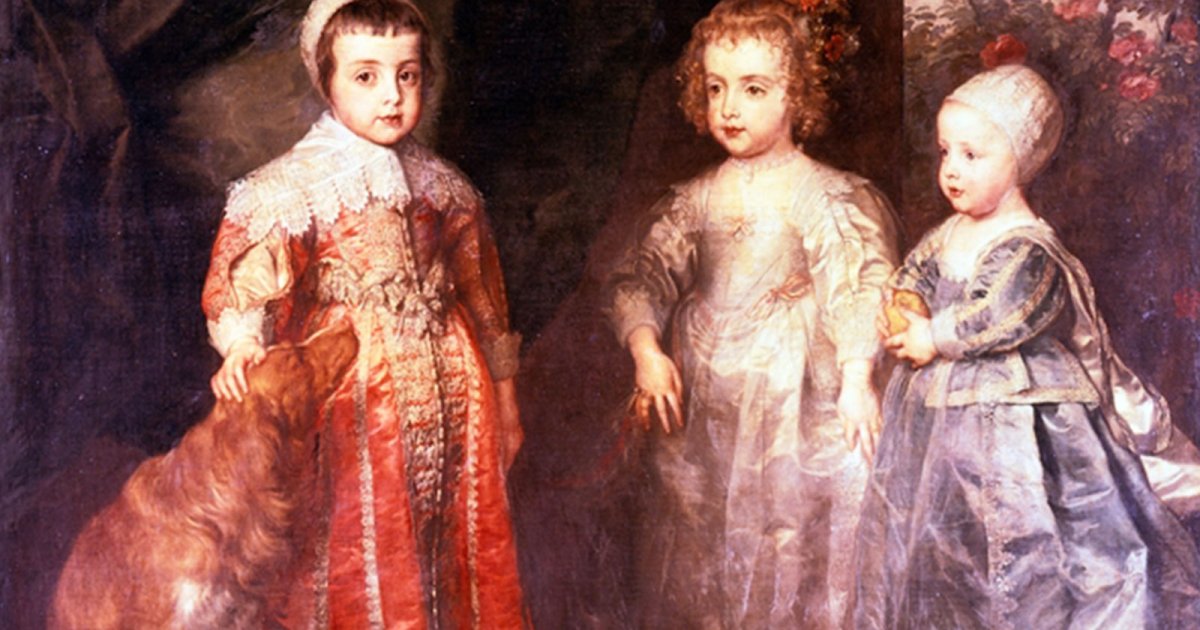SABAUDA GALLERY, Van Dyck
 Language: English / USA
Language: English / USA
Stop to look at the Portrait of The Three Eldest Children of Charles I of England painted by Anthony van Dyck in 1635. You can only be fascinated by this work.
Although Van Dyck was originally from Antwerp, he eventually moved to London when he became a court painter and made several portraits of the English royal family where the figures are often accompanied by dogs. As you can see, here the king's three older children are accompanied by a spaniel, one of the royal family's favorite breeds.
The painting was commissioned by Queen Henrietta Maria, who wanted to give a nice gift to her sister, Maria Cristina of Bourbon-France and the wife of the Duke of Savoy. When it arrived in Turin, the work was given a place of honor in the "Great Chamber" of the Royal Palace. During the French Revolution, the triple portrait was kindly "removed" and taken to the Louvre, but after Napoleon's fall it was returned to Turin to finally become part of the Sabauda Gallery, where it is now one of the most famous images.
Van Dyck was one of the best seventeenth-century artists for painting portraits of European aristocrats: his canvases always communicate a sense of freshness, immediacy, and brightness. Look how well he managed to portray the tenderness of the children, who are in spontaneous poses and aren't forced into pompous and unnatural ones. The bright colors make you instead think of 16th-century Venetian painting, which Van Dyck knew well thanks to his lengthy stays in Italy.
You should know, however, that King Charles I was not happy with his children's portrait; in fact, he scolded the painter because he had been so bold as to depict his eldest son Charles with his everyday clothes instead of his official garb. The other two royal figures are Princess Mary and the Duke of York and future King James II. The apple James is holding has been interpreted as a well-wishing symbol of fertility.
FUN FACT: Van Dyck lived with his mistress in London, who was so jealous that once she bit his finger until it bled to prevent him from painting other women.
And with this we have finished our tour of Turin's Sabauda Gallery. MyWoWo thanks you for staying with us, and will see you at the next Wonder of the World!



